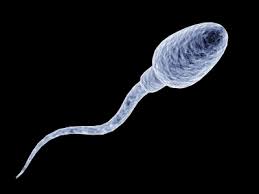Scientists Puzzle Over Declining Sperm Counts; a ‘Crisis’ or Not Enough Data?
Shirley S. Wang
WSJ
July 16, 2013
 Are today’s young men less fertile than their fathers were? It’s a controversy in the fertility field, with some experts raising the alarm over what some are calling a “sperm crisis” because they believe men’s sperm counts have been decreasing for a decade or more.
Are today’s young men less fertile than their fathers were? It’s a controversy in the fertility field, with some experts raising the alarm over what some are calling a “sperm crisis” because they believe men’s sperm counts have been decreasing for a decade or more.
Experts here for the European Society of Human Reproduction and Embryology annual conference last week debated the issue for an entire day.
One recent analysis found that in France, the sperm concentration of men decreased by nearly one-third between 1989 and 2005. Most but not all studies from several European nations with large databases and the ability to track health records have found that over the past 15 years or so, the counts of healthy men ages 18 to 25 have significantly decreased. This comes after a prominent study from the 1990s suggested that sperm count has decreased by half over the last half-century
.
Many experts questioned the validity of those findings. There are huge variations in results by country and region. Certain areas, especially in the developing world, haven’t been studied at all. In the U.S., some historical data suggest a decrease in sperm count among American men, but no published recent data exist.
Understanding if men are producing less sperm has implications beyond male fertility and couples who want children. The same environmental factors that might harm reproduction may also impact other parts of the body. Sperm count has even been linked with life expectancy, independent of cause of death.
“It’s a public health indicator,” says Joëlle Le Moal, an epidemiologist at the French Institute for Public Health Surveillance near Paris.
 Proponents say that exposure to pesticides, endocrine-disrupting chemicals like Bisphenol A and lifestyle habits like sitting for too long contribute to the proposed sperm crisis. And there is increasing evidence that sperm count, like other health conditions, may be influenced by what happens to people early in life, even in the womb.
Proponents say that exposure to pesticides, endocrine-disrupting chemicals like Bisphenol A and lifestyle habits like sitting for too long contribute to the proposed sperm crisis. And there is increasing evidence that sperm count, like other health conditions, may be influenced by what happens to people early in life, even in the womb.
“If our gametes, male or female, are not produced in the right manner, it could impact the next generation’s health,” says Dr. Le Moal.
In general, men produce upward of 60 million sperm per milliliter of semen. As long as the count is roughly greater than 40 million per ml, men are considered fertile and have the same chance of getting their partners pregnant as someone who produces a higher count.
But below that threshold and particularly under about 20 million per ml, their ability to help conceive drops. It may take a couple longer than a year to conceive—a problem known as subfertility—or they may not succeed at all.
 Not everyone in the field agrees a sperm crisis exists. Critics say that sperm concentration in a population is incredibly difficult to measure for a number of reasons, including the primary one of how to find men representative of the population. Tracking men who show up at a fertility clinic, for instance, would skew the results one way. Neither do sperm donors accurately stand for all the men in a region. Some recent studies have examined young men applying for military service, though the participation rate in the research tends to be low.
Not everyone in the field agrees a sperm crisis exists. Critics say that sperm concentration in a population is incredibly difficult to measure for a number of reasons, including the primary one of how to find men representative of the population. Tracking men who show up at a fertility clinic, for instance, would skew the results one way. Neither do sperm donors accurately stand for all the men in a region. Some recent studies have examined young men applying for military service, though the participation rate in the research tends to be low.
In addition, there could be errors in measurement because of any number of immediate environmental factors, including the length of abstinence, scrotal temperature and time of year.
 Daily Stormer The Most Censored Publication in History
Daily Stormer The Most Censored Publication in History


